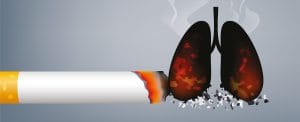A new review indicated that most studies on non-combustion products focus primarily on adverse health outcomes. It also pinpointed the methodologic differences among the regions of the world and the neglecting of the potential benefits of switching from conventional cigarettes to alternative products.
Catania, December 6, 2021 – Snus, chewing tobacco, snuff: the consumption of smokeless tobacco is popular worldwide and some forms represent a safer alternative to cigarette smoking.
Unfortunately, information on the safety profile of smokeless tobacco relies on poor quality studies.
Therefore, a pool of international researchers examined all the evidence available through a systematic review of the studies on smokeless tobacco products between January 2015 and February 2020.
The study, entitled “The health impact of smokeless tobacco products: a systematic review”, published in the prestigious Harm Reduction Journal, evaluated the results of 53 studies, classifying them according to the study’s strength of evidence, quality, results, the products investigated and the geographical areas where it was conducted.
According to the review, what emerged is poor overall quality of the studies (43%), particularly among those carried out in the area of Asia, the Middle East and Africa.
All studies exhibit incredible discrepancies in the safety between different types of smokeless tobacco product and between different geographical regions, ranging from zero risks observed for the use of snus in Sweden to high risks of mortality, cancer and respiratory diseases for studies analyzed in the Middle East, Africa and Asia, with a risk inbetween these for products used in the US.
It is striking above all that no study reports a positive association between using these products and the chance to quit conventional cigarettes.
“The results of our study are in line with the political geography of the main regulations on risk reduction,” explains Prof. Riccardo Polosa, CoEHAR founder and one of the authors of the review. “Countries such as Sweden and Norway, traditionally receptive to risk reduction and open to the marketing of combustion-free products containing nicotine, recognise the right of low-risk alternatives for smokers and today have the lowest smoking prevalence in Europe“.
“The widespread availability of safer nicotine delivery systems without the harms from tobacco, as has been demonstrated for Swedish snus and some other forms of smokeless tobacco products, is a route to ending smoking in the not too distant future as we are already witnessing in Sweden and Norway. A clear distinction needs to be made between the safer snus and refined smokeless tobacco products used in Sweden, Norway and increasingly in the US, and the far riskier unrefined SLT products used in Asia, Middle East and Africa” – add Cother Hajat of the University of the United Arab Emirates.
THE REVIEW
Snus and chewing tobacco represent a large chunk of smoking habits for many countries: in Sweden, the use of snus stands at 20%, while in India the population represents 2/3 of all global consumption, with smoking prevalence higher among men (30%) than women (13%).
The review identified four main geographical areas: six performed globally, thirty-two in the area between Asia, the Middle East and Africa, nine in the United States and six in Europe.
Surprisingly, the outcomes in terms of health varied according to the kind of products used, and the area in which they were conducted.
Research in Southeast Asia and Africa observed high rates of mortality and increased morbidity, such as oral cancer, neck, and head cancer, with probability rates up to 3.87.
On the other hand, European studies did not find excess mortality or morbidity (ischemic heart disease, stroke, cancers of the oral cavity, pancreas or colon).
The US studies presented mixed results for mortality (overall increase, smoking-related cancer and cancer mortality, no high risk of respiratory failure).
There has been no reported research focused on the effects that switching from conventional cigarettes to alternative less-risky products may cause.
A separate consideration for snus: comparing the European situation to the Swedish, it emerges that snus may have contributed to the lower number of deaths attributable to smoking in Sweden.
The use of snus is associated with a decrease in cigarette consumption and an increase in abstinence with scientists suggesting a “reverse gateway” effect in Sweden. Therefore, Swedish studies determined that in smokers who dually approached snus, 10.6% started occasionally smoking, while 76.3% quit.
This study provides confirmation on the potential these products have in cessation pathways and as a tool for implementing harm reduction policies. Further studies are needed, however, to investigate their use in the context of potential broader harms and benefits to society, such as dependence, and weigh up any product-specific harms against the alternative scenario in the absence of such products.




